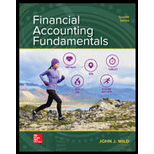
Dividends:
It is the amount of profit that is distributed among shareholders of the company. It can be distributed in two ways, one is cash dividend and other is stock dividend.
It is the type of stock that company keeps with itself either by not issuing the shares or by buying back of shares.
Common Stock:
It shows the total amount of money that the owner has in this business. Owner use their right of being owner by voting for important matters in the general meetings of the company.
Preferred stock is a sort of stockholder’s capital which has special right as comparison to equity to shareholder, like fixed dividend and preferential treatment in event of liquidation and payment of dividend.
1.
To identify: Number of common stock issued and outstanding at 2015 and 2014 and explain its comparison with weighted average common stock of 2015 and 2014.
2.
To identify: Book value of entire common stock.
3.
To identify: Cash dividend to common stock in 2015 and 2014.
4.
To identify: Basic earnings per share of fiscal year 2015, 2014 and 2013 and explain any notable changes.
5.
To identify: Number of shares in treasury stocks in 2015 and 2014.
6.
To identify: Number of common shares outstanding and common shares cash dividend increased since that date.
Want to see the full answer?
Check out a sample textbook solution
Chapter 11 Solutions
FINANCIAL ACCT.FUND.(LOOSELEAF)
- Solvearrow_forwardA local bakery sells 12,000 loaves of sourdough bread each year. The loaves are ordered from an outside supplier, and it takes 4 days for each shipment of loaves to arrive. Ordering costs are estimated at $18 per order. Carrying costs are $6 per loaf per year. Assume that the bakery is open 300 days a year. What is the maximum inventory of loaves held in a given ordering cycle? Solutionarrow_forwardHello tutorarrow_forward
- A local bakery sells 12,000 loaves of sourdough bread each year. The loaves are ordered from an outside supplier, and it takes 4 days for each shipment of loaves to arrive. Ordering costs are estimated at $18 per order. Carrying costs are $6 per loaf per year. Assume that the bakery is open 300 days a year. What is the maximum inventory of loaves held in a given ordering cycle?arrow_forwardGiven solution for General accounting question not use aiarrow_forwardPlease provide correct solution and accounting questionarrow_forward
- Answer? ? Financial accounting questionarrow_forwardWhat is the maximum inventory of places held in a given ordering cyclearrow_forwardA local bakery sells 12,000 loaves of sourdough bread each year. The loaves are ordered from an outside supplier, and it takes 4 days for each shipment of loaves to arrive. Ordering costs are estimated at $18 per order. Carrying costs are $6 per loaf per year. Assume that the bakery is open 300 days a year. What is the maximum inventory of loaves held in a given ordering cycle? need your helparrow_forward
- What is the machine's book value at the end of 20X4?arrow_forwardAccounting solutionarrow_forwardA local bakery sells 12,000 loaves of sourdough bread each year. The loaves are ordered from an outside supplier, and it takes 4 days for each shipment of loaves to arrive. Ordering costs are estimated at $18 per order. Carrying costs are $6 per loaf per year. Assume that the bakery is open 300 days a year. What is the maximum inventory of loaves held in a given ordering cycle?arrow_forward

 AccountingAccountingISBN:9781337272094Author:WARREN, Carl S., Reeve, James M., Duchac, Jonathan E.Publisher:Cengage Learning,
AccountingAccountingISBN:9781337272094Author:WARREN, Carl S., Reeve, James M., Duchac, Jonathan E.Publisher:Cengage Learning, Accounting Information SystemsAccountingISBN:9781337619202Author:Hall, James A.Publisher:Cengage Learning,
Accounting Information SystemsAccountingISBN:9781337619202Author:Hall, James A.Publisher:Cengage Learning, Horngren's Cost Accounting: A Managerial Emphasis...AccountingISBN:9780134475585Author:Srikant M. Datar, Madhav V. RajanPublisher:PEARSON
Horngren's Cost Accounting: A Managerial Emphasis...AccountingISBN:9780134475585Author:Srikant M. Datar, Madhav V. RajanPublisher:PEARSON Intermediate AccountingAccountingISBN:9781259722660Author:J. David Spiceland, Mark W. Nelson, Wayne M ThomasPublisher:McGraw-Hill Education
Intermediate AccountingAccountingISBN:9781259722660Author:J. David Spiceland, Mark W. Nelson, Wayne M ThomasPublisher:McGraw-Hill Education Financial and Managerial AccountingAccountingISBN:9781259726705Author:John J Wild, Ken W. Shaw, Barbara Chiappetta Fundamental Accounting PrinciplesPublisher:McGraw-Hill Education
Financial and Managerial AccountingAccountingISBN:9781259726705Author:John J Wild, Ken W. Shaw, Barbara Chiappetta Fundamental Accounting PrinciplesPublisher:McGraw-Hill Education





